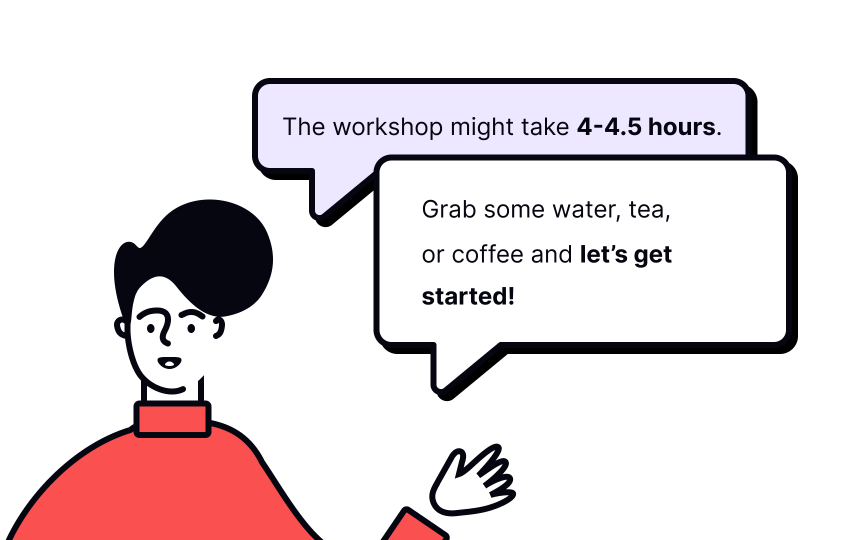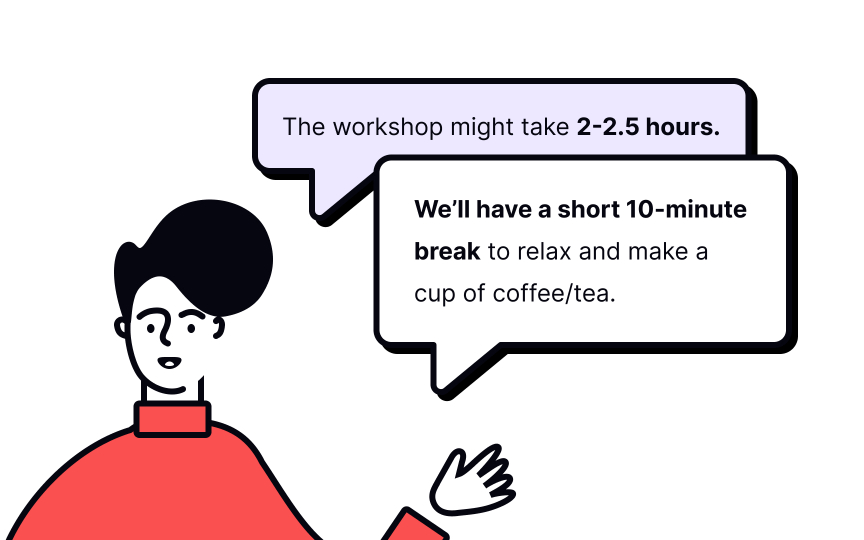What goes into a successful remote workshop
Facilitating a remote workshop may seem effortless in comparison to an on-site workshop. However, many factors, like the technical limitations of a facilitation tool or a lost internet connection, can go wrong. Proper workshop planning prevents any unpleasant surprises and results in achieving the intended goals.
The best practices for having a successful remote workshop include:
- Defining clear goals and preparing data: Write down the problem and set the goals for the workshop — how will this workshop help tackle this problem? Qualitative and quantitative data gathered during user research can help reinforce the goals and problem statement and provide solid arguments in the discussion.
- Introducing the agenda: The facilitator should say a few words about the objective of the workshop even before the icebreaking activities. They should give participants a brief overview of the problem, introduce the invited stakeholders, and mention the artifacts attendees are expected to develop.
- Scheduling breaks: Workshops imply intense brain work, so it's vital to give the participants short breaks to recharge, make a cup of coffee, and let their eyes rest.
- Keeping it short: It's easy to lose track of time during remote workshops. Consider splitting the workshop into two days if the discussion takes longer than 3 hours.[1]
References
- How to Lead a Remote Design Thinking Workshop (2022 Guide) | CareerFoundry


